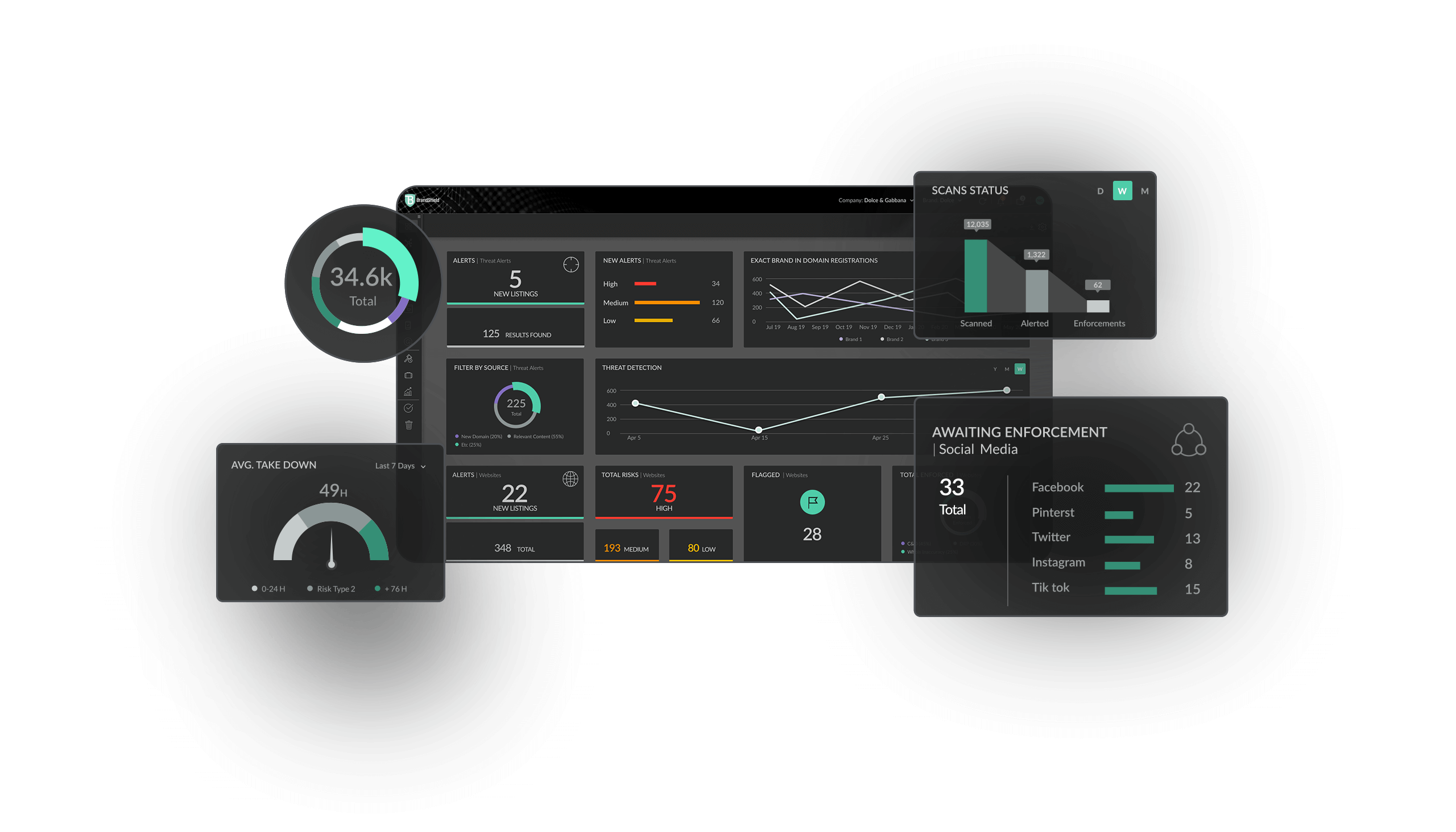BrandShield AI Platform: Complete Buyer's Guide
Enterprise-focused visual trademark protection platform
BrandShield AI Platform is an enterprise-focused visual trademark protection platform that leverages advanced AI image recognition to detect and eliminate brand infringement across digital channels. The platform specializes in automated threat clustering and batch enforcement, making it particularly effective for organizations facing high-volume visual trademark violations.
Market Position & Maturity
Market Standing
BrandShield holds approximately 20% of the brand protection tools market alongside Red Points, positioning itself as a specialized alternative to established leaders like MarkMonitor, OpSec, and Corsearch who collectively control 40% market share[56].
Company Maturity
The vendor serves primarily enterprise clients including Levi's, New Balance, and Dropbox[47][51], indicating capability to serve Fortune 500 requirements.
Industry Recognition
BrandShield's market position reflects the broader AI trademark monitoring landscape transformation, where 62% of IP professionals report organizational enthusiasm for AI adoption, with 42% already implementing AI capabilities[41].
Longevity Assessment
The vendor's focus on enterprise customers with substantial contract values and demonstrated customer success patterns suggest sustainable business model viability.
Proof of Capabilities
Customer Evidence
Levi's deployment demonstrates large-scale counterfeit detection capabilities, with the company's brand protection lead confirming that "image recognition outperforms competitors" while delivering $2.3 million in annual revenue protection[58].
Quantified Outcomes
Pop-A-Lock achieved 98% takedown success across 429 infringing domains[58][59], and Levi's reduced counterfeit-related revenue loss by $2.3 million annually[58].
Case Study Analysis
Pop-A-Lock's implementation resulted in elimination of "rampant trademark threats" across North America, achieving 98% takedown success across 429 infringing domains[58][59].
Market Validation
Customer adoption spans multiple enterprise segments including technology companies (Dropbox), athletic brands (New Balance), and security services (Pop-A-Lock)[47][51][59].
Competitive Wins
BrandShield's image analysis outperforms Red Points, which suffers from high false-positive rates in visual recognition[54][58].
Reference Customers
Enterprise customers include Levi's, New Balance, and Dropbox[47][51].
AI Technology
BrandShield's AI technology foundation centers on advanced visual recognition algorithms achieving up to 95% accuracy in controlled testing conditions for detecting altered logos and partial matches[49][52].
Architecture
BrandShield operates as a cloud-based platform monitoring 200+ jurisdictions with real-time threat detection capabilities[57][58].
Primary Competitors
Main alternatives include MarkMonitor, OpSec, Corsearch, and Red Points[56].
Competitive Advantages
BrandShield's AI.ClusterX technology enables efficient batch processing of similar threats, providing operational efficiency advantages over individual case methodologies[50].
Market Positioning
BrandShield emphasizes visual recognition specialization within the broader trademark monitoring market, holding approximately 20% market share alongside Red Points[56].
Win/Loss Scenarios
BrandShield wins against competitors when organizations prioritize visual infringement detection over comprehensive brand protection suites.
Key Features

Pros & Cons
Use Cases
Featured In Articles
Comprehensive analysis of AI Trademark Monitoring for Legal/Law Firm AI Tools for Legal/Law Firm AI Tools professionals. Expert evaluation of features, pricing, and implementation.
How We Researched This Guide
About This Guide: This comprehensive analysis is based on extensive competitive intelligence and real-world implementation data from leading AI vendors. StayModern updates this guide quarterly to reflect market developments and vendor performance changes.
59+ verified sources per analysis including official documentation, customer reviews, analyst reports, and industry publications.
- • Vendor documentation & whitepapers
- • Customer testimonials & case studies
- • Third-party analyst assessments
- • Industry benchmarking reports
Standardized assessment framework across 8 key dimensions for objective comparison.
- • Technology capabilities & architecture
- • Market position & customer evidence
- • Implementation experience & support
- • Pricing value & competitive position
Research is refreshed every 90 days to capture market changes and new vendor capabilities.
- • New product releases & features
- • Market positioning changes
- • Customer feedback integration
- • Competitive landscape shifts
Every claim is source-linked with direct citations to original materials for verification.
- • Clickable citation links
- • Original source attribution
- • Date stamps for currency
- • Quality score validation
Analysis follows systematic research protocols with consistent evaluation frameworks.
- • Standardized assessment criteria
- • Multi-source verification process
- • Consistent evaluation methodology
- • Quality assurance protocols
Buyer-focused analysis with transparent methodology and factual accuracy commitment.
- • Objective comparative analysis
- • Transparent research methodology
- • Factual accuracy commitment
- • Continuous quality improvement
Quality Commitment: If you find any inaccuracies in our analysis on this page, please contact us at research@staymodern.ai. We're committed to maintaining the highest standards of research integrity and will investigate and correct any issues promptly.